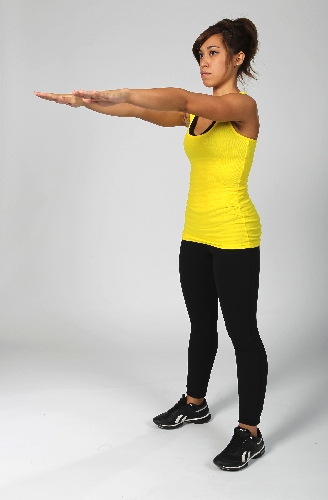Circuits can offer full-body workout with variety

Want something worth posting on Facebook?
What if your next post looked like this: “15 squats, 1/4-mile run, 1-minute plank, done four times, through in less than 20 minutes.” Imagine all the “good jobs!” and “likes” you’ll get.
Circuits are great! As a trainer, I use circuits all the time and I make them tough, even brutal sometimes. You don’t earn bragging rights if it’s not tough.
Circuits are good for conditioning the entire body. They can help build strength and endurance without losing valuable muscle. They are also a fun way of getting in your cardio days. Which sounds better, 45 minutes on the same old machine or completing a circuit and earning bragging rights? Try doing circuits with a workout buddy so you can push each other and be there as a spotter.
My rules for circuits are:
1) Scale the circuit. There are many circuits out there. If you feel one may be too difficult, start small by scaling it to fit your abilities.
2) Rest when you need it. If you feel a few seconds or half a minute will make the next exercise better, then go for it. Grab a sip of water and catch your breath.
3) Finish. Some people like to time their circuits and improve on that time over a few weeks. Others just like to finish. Either way, just complete the task. You’ll feel better having done so.
Today’s circuit – 15 squats, 1/4- mile run, 1-minute plank – can be made difficult for most anyone who goes to the gym. All you have to do is scale it to your specific abilities.
I like starting my circuits off with a strength exercise, something that requires form and specific muscle activation. The squat is a strong start to any circuit.
The squat can be scaled to be more or less difficult. If the basic air squat, without any weight, is too easy, then add some weight. Turn it into a goblet squat by holding a dumbbell with both hands close to the chest. Goblet squats are good if you need 10 to 75 pounds more weight. If you need more than that, scale it up to a back squat by using a barbell on the upper back.
Most people find air squats just fine for circuit use. Circuits make you tired and holding weight up just adds to the difficulty. If air squats are still a little too difficult then feel free to decrease the number of repetitions.
For many people, five reps are plenty. Also try just the standing part of the squat. Start by just sitting on a chair and standing with the correct form.
I like to add a cardio exercise into my circuits. For today’s, I chose the treadmill. Most people can run a quarter-mile somewhere between two and five minutes.
Scaling is simple for this part of the circuit, too. If running is difficult, then try walking on an incline. If the knees are too tender for the prolonged exposure to the treadmill, then use the elliptical. If you prefer to work out at home where there isn’t a treadmill handy, then jump rope for two minutes.
For the last exercise, I always add a core exercise into the mix, something isometric to give the lungs a rest while still making the body work.
The plank is the built-in recovery time for this circuit. During a plank, you just hold the position. Concentrate on letting the heart rate come down and catching your breath. You might not even feel your abs burning as much as you’re used to. If a 1-minute plank is too much, then try 30 seconds or even 15 seconds.
I would love to hear how it went. What did you do to scale different exercises and how long did it take you?
Do this circuit four times with rest as needed. Remember to include running or jogging on a treadmill with the two exercises detailed today.
Chris Huth is a Las Vegas trainer. You can email him at 702trainer@gmail.com. Before beginning any exercise program, consult your physician.